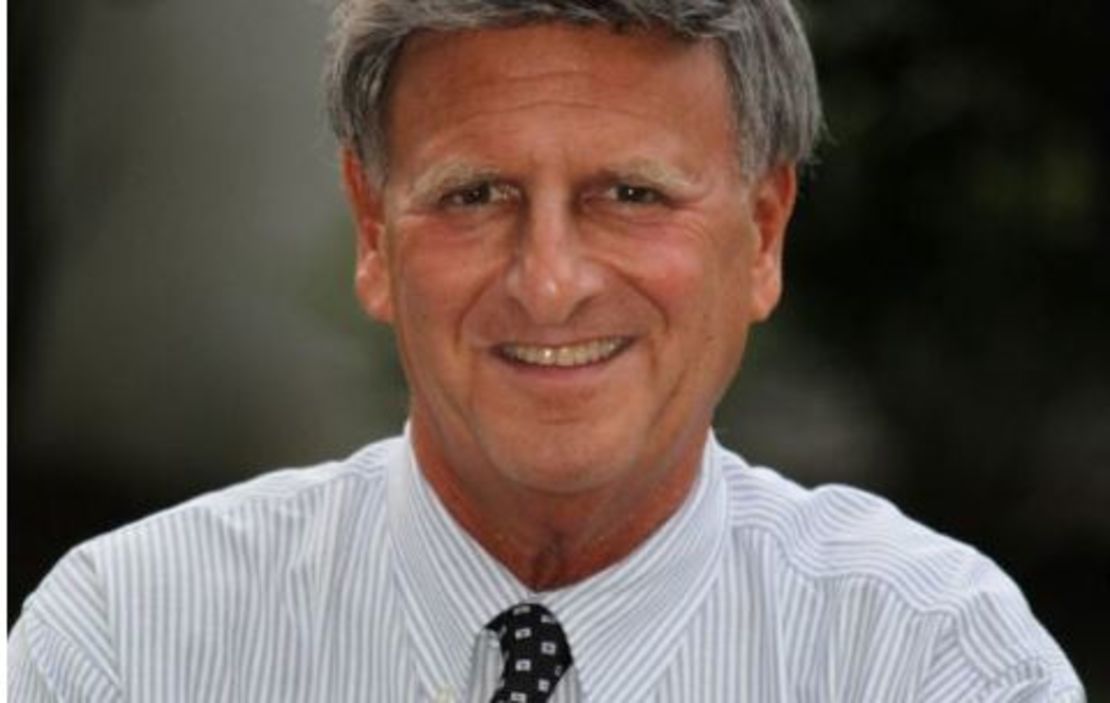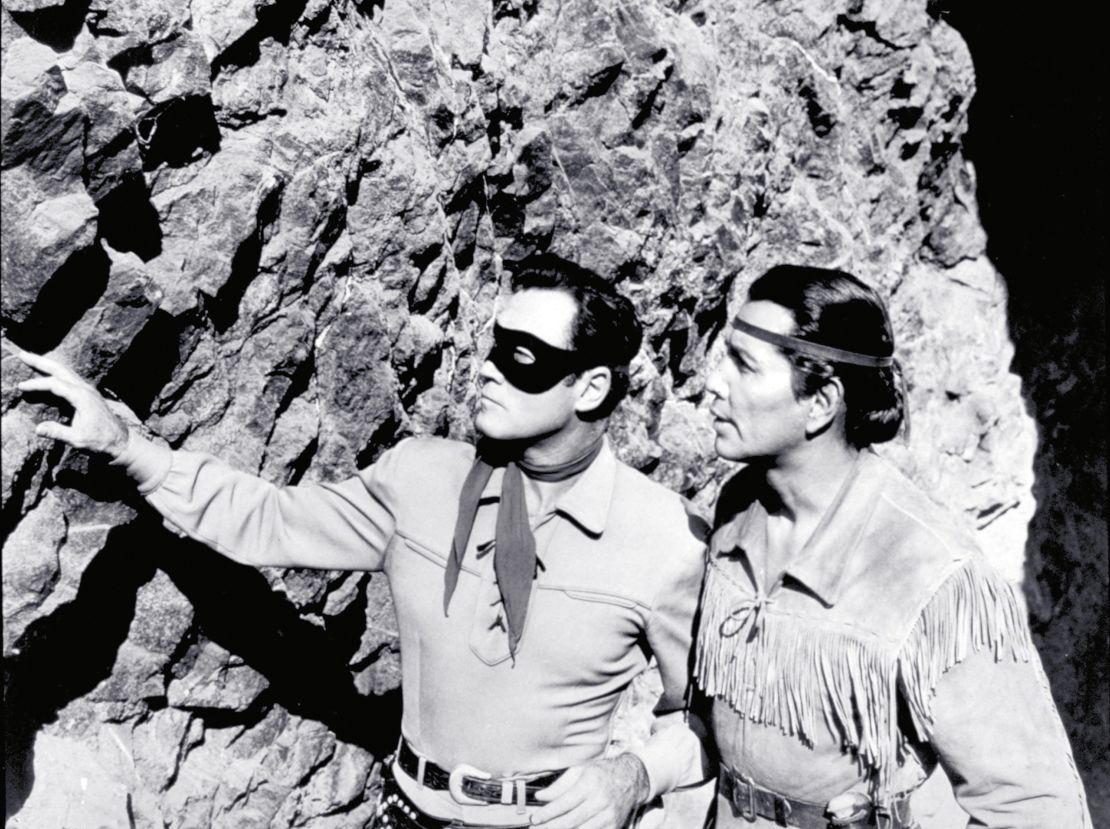Editor’s Note: CNN contributor Bob Greene is a best-selling author whose 25 books include “Late Edition: A Love Story”; “Once Upon a Town: The Miracle of the North Platte Canteen”; and “When We Get to Surf City: A Journey Through America in Pursuit of Rock and Roll, Friendship, and Dreams.”
Story highlights
New movie "The Lone Ranger" will come out this summer, styled after the old TV show
Bob Greene: The Lone Ranger saved the day and left, not bragging or expecting accolades
Greene: The message: Deeds stand for themselves. Don't blow your own horn
Unlike today, Green says, he would never have tweeted out his fight against justice
“The Lone Ranger” is expected to be one of the biggest movies of the summer; it opens over the long Fourth of July weekend, and the promotional buildup is in high gear.
There will be much discussion about how the top-ranking box-office star in the movie, Johnny Depp, portrays not the Lone Ranger, but Tonto. The title role is being played by Armie Hammer, an actor not as familiar to audiences around the world.
The most interesting thing about the movie, though – and potentially the most heartening thing – will be if it manages to bring back into American life the greatest single aspect of the old “Lone Ranger” television show.

Not the “Hi-Yo Silver, away!” cry of the Lone Ranger, although that was always a thrill to see and hear. Not Silver himself, although the white stallion was a majestic and beautiful horse. Not the “William Tell Overture,” although few pieces of music have ever been so inextricably linked to a fictional hero.
It will be fine and fitting if the producers and director of the new “Lone Ranger” include all of those things in the film.
But the real service they will be providing to the country is if they have had the good judgment to emphasize the best lesson the Lone Ranger taught.
It came at the end of every half-hour television episode.
The Lone Ranger – played by the incomparable Clayton Moore – would have finished doing laudable deeds and fighting injustice in whatever Western town to which that week’s plot had taken him and Tonto. Goodness had prevailed.
One of the local citizens would turn to thank the Lone Ranger for what he had done – to tell him how grateful the town was.

But the Lone Ranger would be gone. He would already have ridden away astride Silver.
In the national memory, the townsman or townswoman would always say:
“Who was that masked man?”
In reality, the exact words would vary from episode to episode. Sometimes the person would say: “He never even told us his name.” Sometimes it would be: “But I never got a chance to thank him – who was that man?”
However the question was phrased, the answer was unfailingly some version of:
“You don’t know who that was? Well, that was … the Lone Ranger!”
Cue William Tell.
And the unspoken lesson – one very much out of fashion today – was:
Let your deeds stand for themselves. Don’t blow your own horn; don’t seek credit or applause. If you do something well, there’s no need to tell people about it, or hang around waiting for cheers. Do good, and then get out.
Don’t trawl for gratitude.
Resist curtain calls.
Legends grow largest in absentia.
Those verities seem to have been steamrollered into oblivion in our culture, in which people appear to believe that each new smidgeon of personal achievement must instantly be shared with the world via every social network or public microphone available. The Lone Ranger had no interest in being present when, belatedly, the people he had helped figured out just what a fine job he had done; it’s hard to imagine him riding away from the town, pulling Silver to a halt in some canyon, and sending word to his Facebook friends that he had saved the day once again.
But if he were around in the 21st century, where the unofficial theme song is “There’s No Aggrandizement Like Self-Aggrandizement,” his reticence would make him seem like an outcast, at odds with the tenor of the times.
“The Lone Ranger” television series ran from 1949 until 1957, and stayed on the air in reruns for decades. If there was anyone bigger and more admired than the Lone Ranger in the years when the TV show originally was seen, it was Dwight D. Eisenhower, who was then serving as president of the United States.
Eisenhower was a person who instinctively understood the Lone Ranger ethos – he knew that if a man has done his work well enough, he doesn’t have to proclaim it. While in the White House, he wrote a letter to a friend in which he lamented that “some people tend to confuse facility of expression with wisdom; a love of the limelight with depth of perception.” There was no such thing as Twitter when Ike was alive, but if there had been, you kind of sense that he never would have tweeted: “Just led the Allied invasion of Nazi-occupied Europe. Boo-ya!”
Clayton Moore died at age 85 in 1999; he had some heartache after the television series went off the air. He enjoyed making public appearances as the Lone Ranger, telling stories to children and their parents. But in 1981, a California movie producer made a new “Lone Ranger” film starring someone named Klinton Spilsbury. The producer and his take-no-prisoners lawyers went relentlessly after Clayton Moore, telling him that he could no longer wear the Lone Ranger mask in public, threatening him with harsh and dire legal sanctions.
I had gotten to know Moore late in his life; he was quietly crushed by the disdain with which he was being treated. He told me that the entertainment-industry lawyer going after him “told me again and again that I was too old to be the Lone Ranger. He told me that he was going to get an injunction against me ever appearing as the Lone Ranger again, and he said that I could expect to see a marshal at my door to deliver the injunction. I felt afraid and desperate.
“I can’t tell you how hurt I was. I’m a gentleman, though, and I walked out as a gentleman would walk out – as a gentleman.”
You can only hope that once the door closed, the lawyer was chastened enough to sit there at the conference table for a moment and ask himself:
Who was that masked man?
Follow @CNNOpinion on Twitter.
Join us at Facebook/CNNOpinion.
The opinions expressed in this commentary are solely those of Bob Greene.






